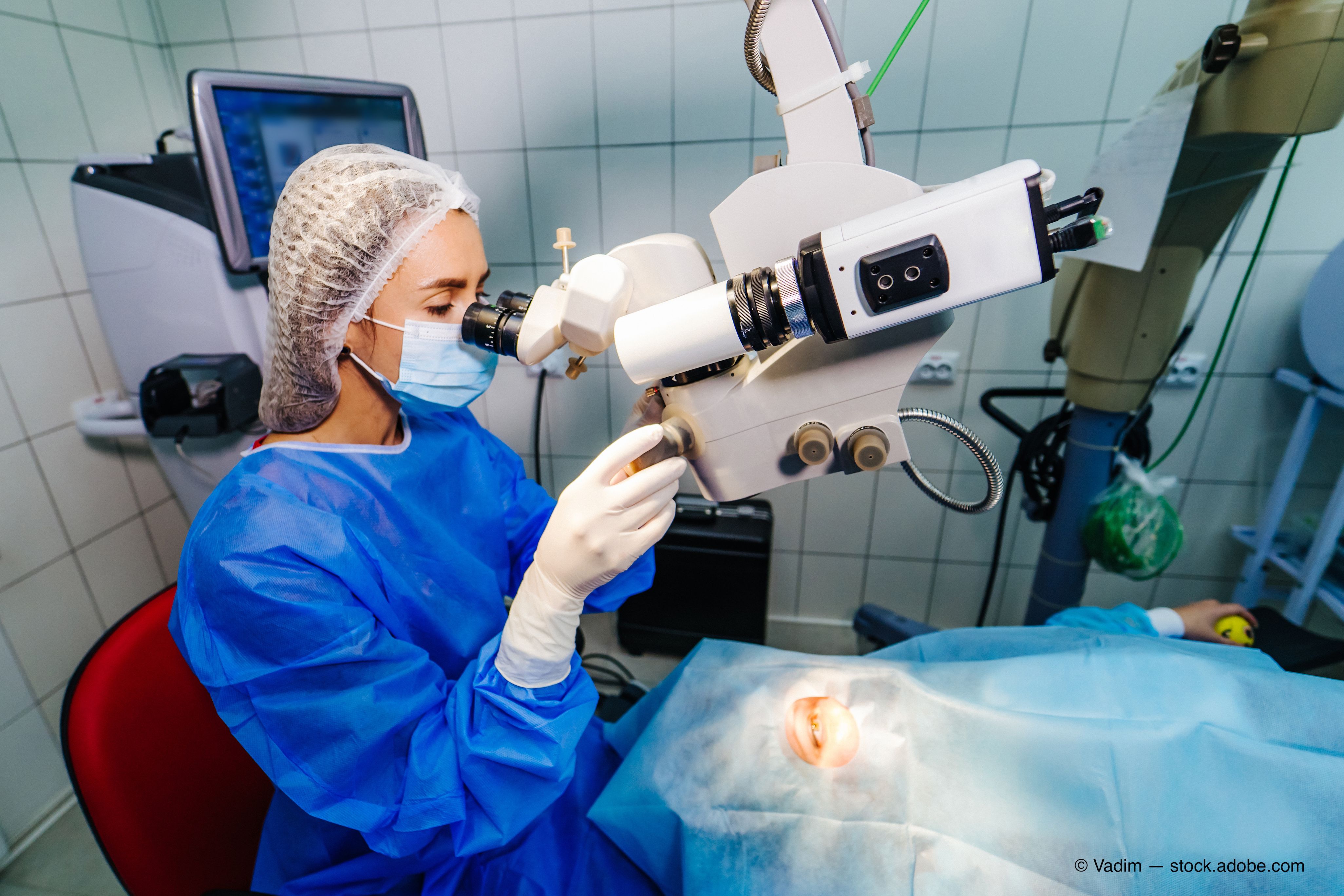Femtosecond laser-assisted RLE offering better outcomes

Pairing femtosecond laser-assisted RLE with a presbyopia-correcting IOL can offer improved patient satisfaction.
This article was reviewed by R. Luke Rebenitsch, MD
The technology surrounding IOLs has evolved exponentially, and with that patients’ expectations regarding the best possible outcomes after refractive lens-based surgery have escalated.
In response to the use of multifocal and extended-depth-of-focus (EDOF) IOLs, femtosecond laser-assisted refractive lens exchange (RLE) may be the technology of choice to achieve even better outcomes, including correction of refractive errors and spectacle independence, with presbyopia-correcting IOLs.
Related: Avoiding IOL refinements after presbyopia-correction surgery
“RLE is performed increasingly more often to address refractive errors, presbyopia, and to eliminate the need for a future cataract surgery,” said R. Luke Rebenitsch, MD, owner and medical director of ClearSight Center, Oklahoma City, OK.
However, with that trend comes some downsides. Multifocal IOLs and extended-depth-of-focus IOLs are more sensitive to tilt and defocus than monofocal IOLs. To determine the potential benefit of femtosecond laser-assisted RLE with presbyopia-correcting IOLs, Dr. Rebenitsch and colleagues conducted a study to evaluate the visual and refractive outcomes postoperatively.
“The precise and automated nature of the femtosecond laser may positively impact the accuracy, safety, and patient satisfaction,” he said.
In support of that, Dr. Rebenitsch recalled a study (J Cataract Refract Surg. 2019;45:21-27) that compared the refractive and aberrometry outcomes obtained with a diffractive multifocal IOL using femtosecond laser-assisted surgery and phacoemulsification in 39 patients.
The study reported that while the visual results with monofocal IOLs were unaffected, a decrease in the internal aberrations was seen in the group treated with femtosecond laser-assisted surgery compared with phacoemulsification. The decrease was due to less tilt and the better effective lens position of the IOL in the eye.
Related: Changing focus of accommodating IOLs now reaching a new level
The study
The study was a single-site retrospective chart review that included 590 eyes of presbyopic patients who wanted spectacle independence. One surgeon performed the RLEs.
Eyes were included if they had stable tear film, corneal higher-order aberrations (HOAs) under 0.4 μm at 4 mm. Total corneal astigmatism (TCA) less than 0.5 D was left untreated; TCA exceeding 0.5 D were considered for treatment, that is, by arcuate keratotomy or toric IOL.
Patients with residual refractive error who were unsatisfied with the visual quality underwent laser vision correction from 10 to 12 weeks after the RLE procedure.
The investigators used a combination of an EDOF IOL and a multifocal IOL. The ZLBOO was used to achieve distance and near vision in one eye and the EDOF IOL for distance and intermediate in the other eye.
“This would allow for seamless quality of vision from near to distance without any loss of quality,” Dr. Rebenitsch pointed out.
Related: Trifocal IOL a key for premium cataract surgery practice
The LENSAR femtosecond laser system was used to in all eyes for femtosecond laser-assisted RLEs with or without arcuate keratotomy. When a toric IOL was used, initially the treatment axis was marked with the femtosecond laser using intrastromal corneal arcuate marks (IntelliAxis-C, LENSAR) or later anterior capsulotomy marks (IntelliAxis Refractive Capsulorhexis, LENSAR).
For presbyopia correction, the investigators implanted an intermediate add EDOF IOL (Tecnis Symfony, Johnson & Johnson Vision) (group 1, 475 eyes); for patients with excessive astigmatism, they used a bilateral EDOF toric IOL (Tecnis Symfony toric) with a near target in the nondominant eye (group 2, 115 eyes).
Dr. Rebenitsch reported that in group 1, 91% of eyes achieved within ±0.5 D of the target refraction with an average manifest refraction spherical equivalent of about plano. In group 2, the astigmatism was reduced to an average 0.47 D compared with baseline (p = 0.001).
In group 1, 97% of eyes achieved an postoperative uncorrected distance visual acuity of 20/40 or better; in group 2, 94% did so.
“As expected,” Dr. Rebenitsch said, “the uncorrected near visual acuity (UNVA) was excellent; 93% of eyes achieved an UNVA of 20/40 or better. In group 2, 83% achieved that level of UNVA.”
A patient satisfaction survey indicated that 90% were completely or very satisfied with the visual results postoperatively, and 10% reported that they were somewhat satisfied. Over 90% indicated that they were completely happy or very happy that they underwent vision correction surgery; under 10% reported that they were somewhat happy.
The vast majority, i.e., 97% said they would recommend the procedure to a friend or family member, according to Dr. Rebenitsch.
Related: Advanced toric IOL calculator improves refractive outcomes
A caveat is that with RLE it is inherently more difficult to achieve patient satisfaction because patients have a clear lens, larger pupils, and higher expectations than those undergoing cataract surgery. We inform patients that they will need readers for fine print, although many do not need readers at all, Dr. Rebenitsch noted.
“Given the greater consistency of the procedure, I believe the femtosecond laser can assist in achieving even better outcomes in the group,” he said. “With 97% recommending this to family members, this has been the fastest growing part of our practice over the last three years.”
Dr. Rebenitsch concluded that atients can achieve positive refractive and visual outcomes after femtosecond laser-assisted RLE with presbyopia-correcting IOLs.
“This is potentially due to improved prediction of the effective lens position, easier centration, decreased internal HOAs, and improved toric alignment due to a reproducible capsulotomy and femtosecond capsular marks,” he said. “Improved patient satisfaction likely can be achieved by mixing multifocal and extended-depth-of-focus IOLs to achieve a fuller depth of focus as seen with the better near and distance uncorrected vision.”
Read more by Lynda Charters
R. Luke Rebenitsch, MD
E: Dr. Luke@ClearSight.com
Dr. Rebenitsch is a consultant to Carl Zeiss Meditec and has received speaking fees from Staar Surgical and LENSAR.